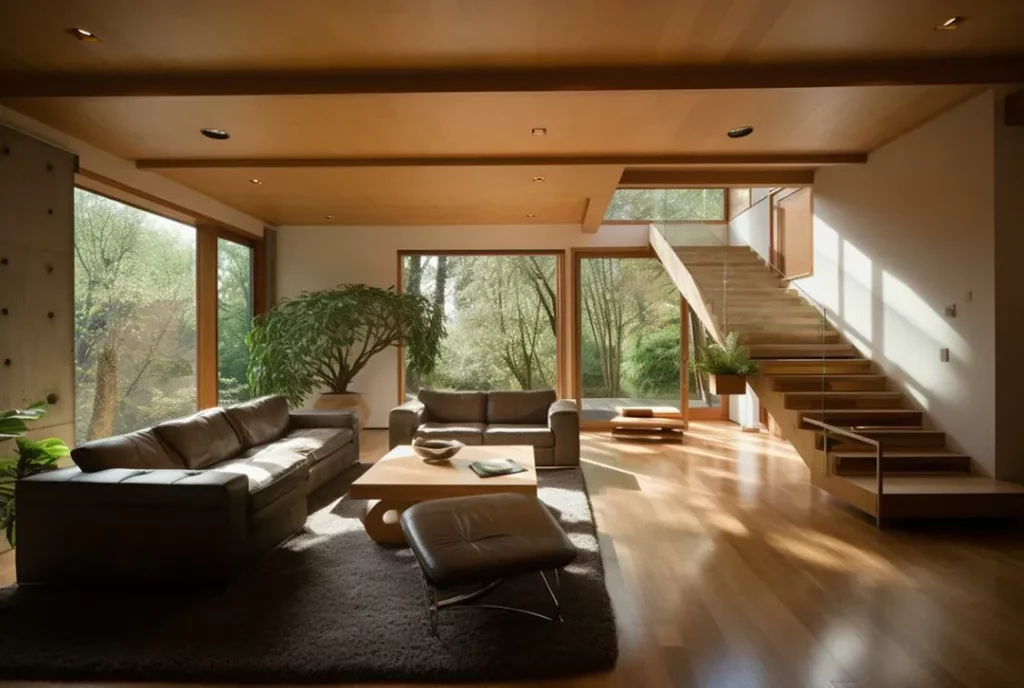As the world advances in its appreciation for sustainable practices, the sphere of home remodeling is not left behind. The global drive towards creating a greener planet has seen an upsurge in eco-friendly home improvements that not only reduce environmental impact but also provide numerous benefits such as cutting down on energy costs and improving indoor air quality.
This article will delve into the realm of ‘Building Greener Tomorrows: Eco-Friendly Home Remodeling in Action,’ offering a comprehensive understanding of what it entails to remodel one’s house with an eye for sustainability.
In this journey towards implementing environmentally friendly home upgrades, knowledge of appropriate materials and techniques is indispensable. The first part discusses the concept of eco-friendly remodeling – its origin, principles, and relevance in today’s society. It aims to provide a clear picture of how this practice contributes to conservation efforts while enhancing the aesthetic appeal and functionality within residential spaces.
Following this, readers will gain insights into various green improvement projects that seamlessly blend innovation with nature conservation. From efficient insulation options to low-flow water fixtures; renewable materials to smart technology integrations; each possibility showcases how homes can be transformed into havens that mirror our collective commitment towards building a greener future.
Understanding Eco-friendly Remodeling
Delving into the concept of eco-friendly remodeling uncovers a revolutionary approach to home improvement that not only enhances living spaces but also champions sustainability, fostering a profound connection with the environment. Often misunderstood as merely replacing old appliances with energy-efficient models or installing solar panels, it goes well beyond this simplistic perception.
This transformative process extends to every aspect of home design and construction, from utilizing non-toxic building materials and reducing waste generation to harnessing renewable energy sources and incorporating water and energy-saving systems.
When discussing eco-friendly remodeling techniques, one cannot ignore the significance of utilizing sustainable materials. These materials are either derived from renewable resources, recycled goods, or those produced through environmentally responsible methods.
The usage of these materials in renovations minimizes environmental impact while providing healthier indoor air quality by reducing exposure to toxic chemicals commonly found in conventional building products. For instance, bamboo or reclaimed wood can replace traditional hardwoods for flooring; insulation can be achieved using cellulose instead of fiberglass; paints used can be low-VOC (Volatile Organic Compounds) types.
While moving towards greener tomorrows via eco-friendly remodeling might seem daunting initially due to perceived high upfront costs or lack of know-how, it is essential to consider its long-term benefits – both environmental and financial ones. A well-planned green renovation will result in lower utility bills over time due to improved energy efficiency and reduced water consumption among other things. Moreover, homes upgraded in this manner often have a higher resale value — a testament to an increasing number of homeowners recognizing the importance and value of sustainability initiatives within their living spaces.
Implementing Eco-friendly Home Improvements
Implementing sustainable improvements in domestic environments serves as a catalyst for the promotion of energy efficiency, thereby painting a vivid picture of an environmentally conscious future.
Adoption of eco-resilient materials and renewable energy systems are integral components of this transformation. Eco-resilient materials such as bamboo, cork and recycled steel not only reduce reliance on non-renewable resources but also offer durability and aesthetic appeal. Renewable energy systems, including solar panels and geothermal heating, amplify the endeavor towards self-sufficiency while minimizing carbon footprint.
Eco-friendly remodeling techniques demand a comprehensive understanding of building science principles to ensure optimal utilization of resources without compromising on comfort or design. For instance, incorporating passive architectural strategies like effective insulation can dramatically reduce thermal load and enhance energy efficiency.
Moreover, replacing conventional fixtures with LED lighting options or low-flow plumbing fixtures can contribute significantly towards resource conservation. Additionally, practices such as rainwater harvesting and greywater recycling embody the philosophy of sustainability by promoting water conservation at home.
To fully embrace these green transformations necessitates an appreciation for the long-term benefits they endow upon both residences and communities alike. The initial cost investment is often offset by substantial savings in utility bills over time, providing financial incentive alongside environmental stewardship.
Beyond just individual homes, widespread implementation could lead to decreased dependency on fossil fuels, mitigating detrimental impacts on climate change while fostering neighborhood interconnectivity through shared values around sustainable living practices. In essence, these eco-friendly home improvements act as stepping stones towards building greener tomorrows; a testament to humanity’s capacity for ingenuity and resilience amidst changing environmental landscapes.
Harvesting Home Comfort: Embracing Farmhouse Remodeling Trends
Building Dreams: How Home Renovation Can Transform Your Space


